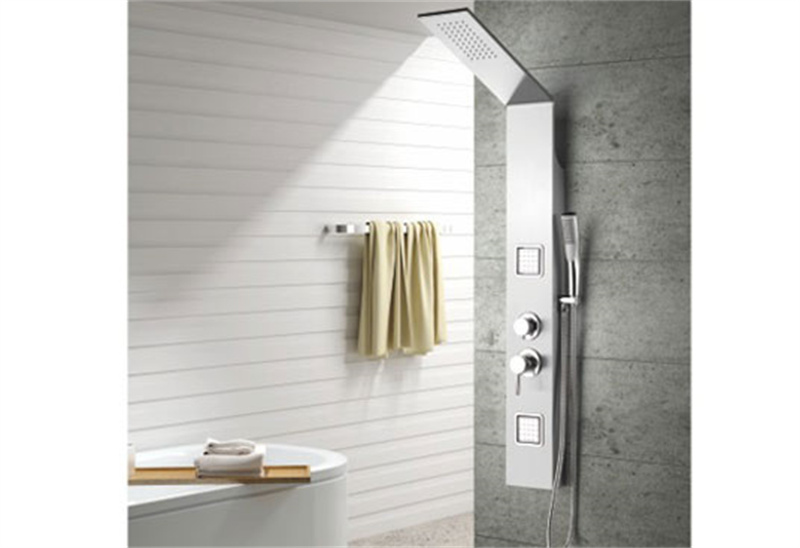Cleaning and maintaining a thermostatic
shower panel is essential to ensure its longevity and keep it looking and functioning at its best. Here are general guidelines for cleaning and maintaining a shower panel:
Regular Cleaning:
Wipe down the entire surface of the shower panel regularly with a soft, damp cloth to remove soap scum, water spots, and any other build-up. This helps prevent the accumulation of dirt and maintains the panel's appearance.
Mild Cleansers:
Use mild, non-abrasive cleansers or soapy water to clean the surfaces. Avoid harsh chemicals or abrasive cleaning agents, as they can damage the finish or components of the shower panel.
Avoid Abrasive Tools:
Do not use abrasive sponges, brushes, or scouring pads, as they can scratch or damage the surface of the panel. Stick to soft materials to prevent any harm to the finish.
Clean Jets and Nozzles:
If your shower panel includes body jets or nozzles, clean them periodically to prevent clogs. Use a small brush or toothbrush to gently scrub the openings and remove any build-up.
Descaling:
If your water supply has a high mineral content, you may need to descale the shower panel periodically. Vinegar is a common and effective descaling agent. Mix vinegar with water, apply it to the panel surfaces, and let it sit for a while before wiping it off.
Avoid Hard Water Stains:
Wipe off water droplets after each use to avoid hard water stains. Hard water deposits can accumulate over time, affecting both the appearance and functionality of the shower panel.
Check Seals and Gaskets:
Periodically inspect the seals and gaskets for any signs of wear or damage. If you notice any issues, such as leaks or deterioration, replace the seals promptly to maintain the integrity of the shower panel.
Keep Controls Dry:
Ensure that the controls, especially if they are electronic, remain dry. Avoid allowing water to pool around the control panel or any electronic components.
Read the Manufacturer's Instructions:
Refer to the manufacturer's cleaning and maintenance instructions specific to your shower panel model. Follow any guidelines provided to avoid voiding warranties or causing damage.
Professional Maintenance:
If you encounter any issues with the thermostatic valve or other internal components, it's advisable to consult a professional plumber or technician for maintenance and repairs.
By following these guidelines and addressing issues promptly, you can keep your thermostatic shower panel in good condition, ensuring a clean and enjoyable showering experience. Regular maintenance contributes to the longevity of the panel and helps prevent problems associated with neglect or improper care.








